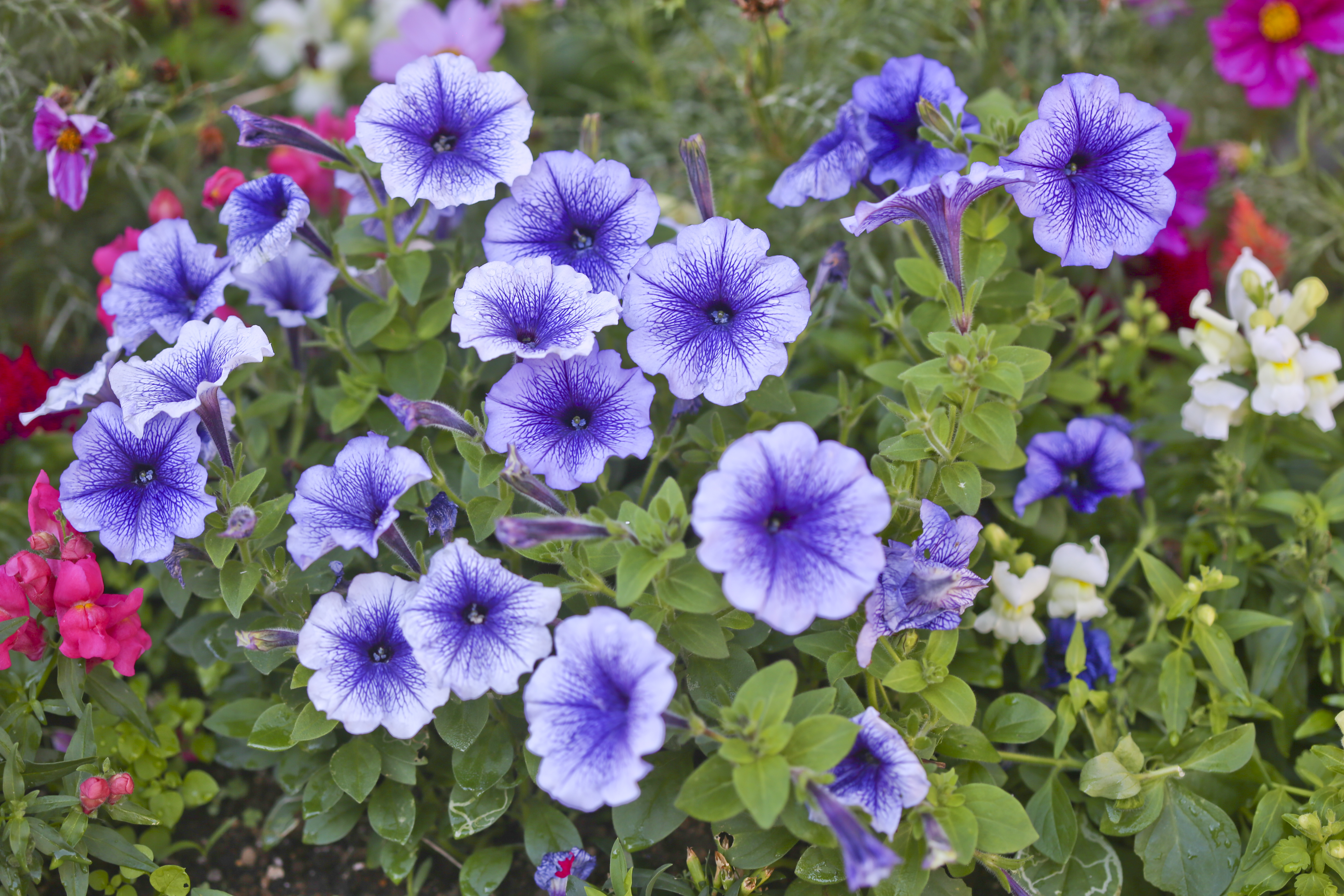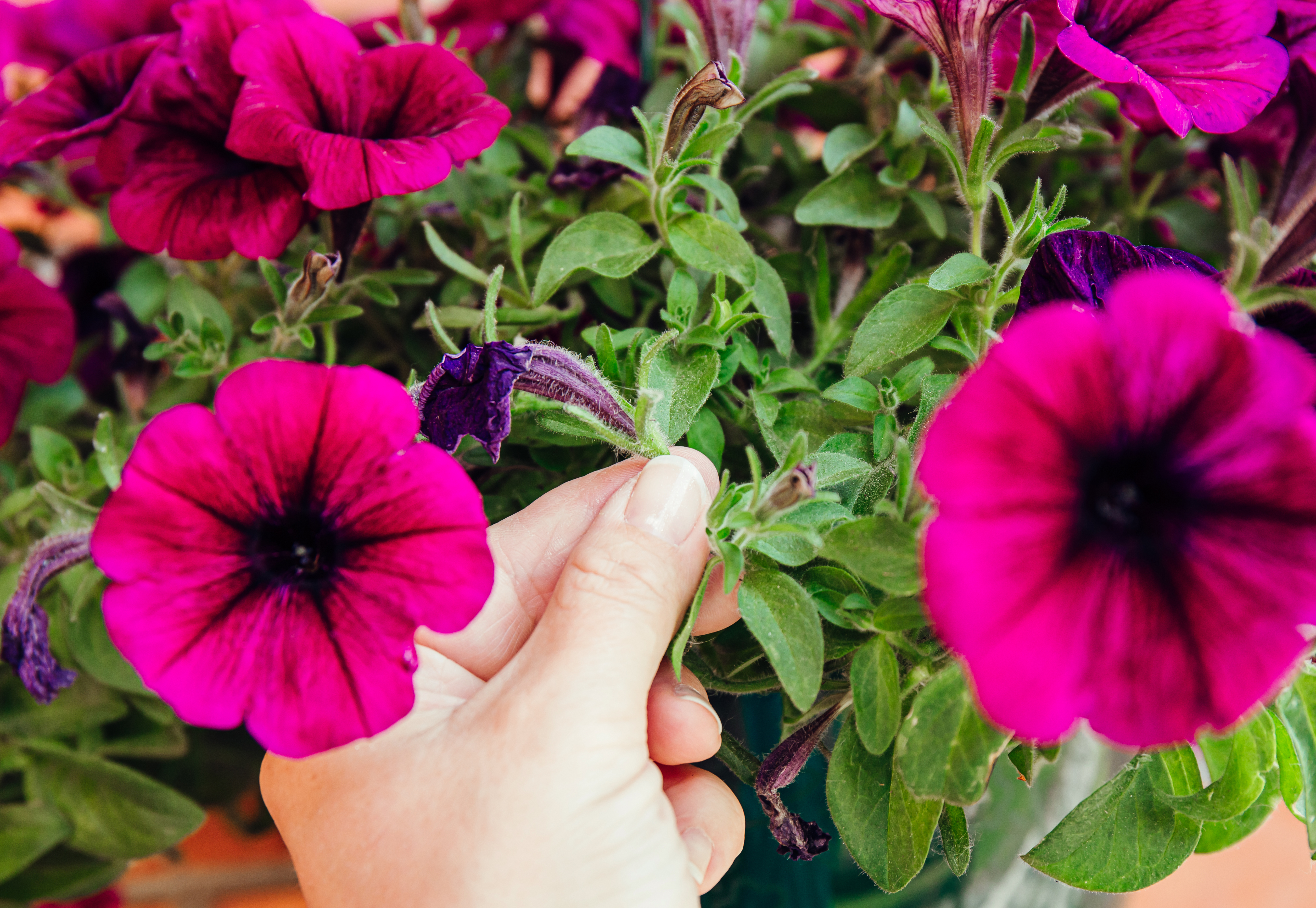
Petunias are beautiful annual blooms that come in a range of different shades and colors. Its delicate appearance has become quite a popular choice for gardeners who enjoy giving their backyard a burst of vibrant hues and character.
Adding a touch of allure to your backyard, these fast growing plants that have engrossing long-trumpet shaped faces, come in many varieties. Petunia is a genus of 20 species of flowering plants, and Laura Janney, gardening expert and founder of The Inspired Garden, an online resource and course center for new and experienced gardeners, tells us: 'Petunias are no longer the petunias you may remember from your childhood! With newer varieties like Wave or Supertunia, you get prolific blooms with minimal to no deadheading, better heat and humidity tolerance and they come in many different growing habits making it easy to choose the right petunia for the job whether that’s dotting them along your garden border or using them in hanging baskets'. We love them as flowers for window boxes too.
Now, if you want to plant these blooms in your garden this season, here is everything you need to know.
What are the different types of petunias?

These wonderful blooms come in many different verities, each carrying their own unique growth habits. In order to choose the right one for your backyard, you need to consider the growing location, level of maintenance and of course, your desired color of choice!
Based on characteristics, here are 5 types of petunias to keep an eye out for:
Spreading petunias - As it states in the name, these blooms are known to spread as they grow. They are a great plant option for hanging baskets and containers. To elevate your backyard, add your blooms into this Hanging Planter from Walmart.
Grandifloras petunias - They're large and loud in the way they look. These blooms can grow in singles or in ruffled doubles. They can be up to 12 centimetres in diameter and can be grown as bedding plants or in containers and hanging baskets.
Multifloras petunias - They may be smaller in size, but they sure do know how to bloom. Multifloras petunias bloom in greater quantities and are known to be strong blooms when it comes to adverse weather conditions. Oh, and the best part is, these beautiful are also disease-resistant!
Floribundas petunias - A hybrid of multifloras and grandifloras petunias, these blooms produce in great numbers and can grow up to about 7 centimetres. They are often used in garden beds or as container plants.
Millifloras petunias - Small, dainty and delicate, these petunias grow to about 2.5 centimetres in diameter and can produce many blooms per plant. Millifloras petunias are great for container planting and hanging baskets.
How to take care of petunias

Remember to:
• Water your blooms
• Check the soil
• Depending on the variety, you may need deadhead your petunias
• Fertilize your petunias
Petunias need love and attention, just like any other plant. These blooms thrive in moisture and sun. Plant and gardening expert Laura Janney says: 'As soon as you are done planting, make sure to water your petunias. They like moist, but not overly saturated soil. As these are sun loving annuals, make sure to stay on top of watering, always watering during either the morning or early evening. Try to water the base of the plant and not the foliage'.
Laura says we need to be extra cautious with the delicate blooms. She adds: 'Soil in containers dry out faster than in a garden so be especially vigilant. To check if you need to water, stick your finger in the soil, if it’s wet, skip it! If the soil feels dry, give it some water. Depending on your petunia variety, it may be necessary to deadhead your petunias. Easy to spot, a past bloom petunia will look as if it has deflated. Simply grab the spent bloom and pull it off. Continue until you’ve removed all spent blooms. To keep petunias in top shape, deadheading is an absolute must! Newer varieties of petunias are self-cleaning and require none to minimal deadheading'. Laura says If you’re a gardener pressed for time, these would be the best options for you.
'By mid summer, your petunias may start to get a little leggy. We use this term when the stem of a plant seems unnaturally long. No worries! Simply take a pair of garden shears or clippers and cut your petunia back by a third. This reinvigorates the plant and encourages new blooms and branching. Feel free to fertilize your petunias once every two weeks with a bloom booster. Always follow package instructions when applying to minimize any chance of fertilizer burn,' she adds.
Price: $4.94 | Material: Steel
This Steel Gardening Shears Dark Copper from Target is ideal for keeping your blooms happy and healthy. Its sharp steel blade is perfect for cutting into small branches, delicate leaves and stems. It is also great for deadheading petunias to remove any damaged or dead blooms. Designed with a curved handle to make your gardening experience as smooth as possible.
Price: $10.98 | Material: Silicone
Ever heard of a thumb pruner? As petunias are quite delicate, it's best to use tools that will help their growth, rather than damage them. This Garden Silicone Thumb Knife from Amazon is ideal for pruning, as well as picking fruits and vegetables. Its one hand picking and trimming will help you get through your gardening tasks efficiently.
Price: $28.99 | Type: Water soluble
Fertilizing your petunias will replenish its nutrients and help towards the growth and development of your delicate blooms. This Jack's Classic 20-6-22 Petunia Feed from Amazon comes in 20-6-22 — which has been designed for plants that do not take up iron efficiently in the root zone. Ideal and easy to use, your plants will be full of life with this fertilizer.
How to plant petunias

While these blooms are considered tender perennials, Laura explains that in most zones, they are an annual. If you're looking to add these blooms to your collections of flourishing flowers, Laura says you should, 'consider starting petunias from seed. While petunias in all colors and textures can easily be found at your local nursery, starting petunias from seed also gives you the opportunity to experiment growing different varieties and colors'.
She continues: 'To direct sow your petunias into your garden or container, simply wait until all threat of frost has passed, sprinkle your seed, and water them lightly. Petunias like full sun and well draining soil. If your garden bed has heavy, clay soil, mix in a bit of organic soil or compost. If you have access to a greenhouse or grow lights, you can also start your petunias indoors 8-12 weeks before your last frost. Transplant your seedlings when all threat of frost has passed'.
If you're looking to grow petunias, follow these steps:
1) Choose the right location for your blooms - Petunias prefer full sunlight and well-draining soil. Be sure to find a location spot that will give your blooms a few hours of sunlight per day — at least 5 or 6 hours in the sun is ideal.
2) It's time to prepare your soil. If you are planting in a garden bed, as Laura advises, it would be best to mix in a but of organic matter. This will help improve your drainage and fertility.
3) Plant away! Get your hand trowel and dig a hole that is a little bigger than the plant's root ball. Once that's done, place the petunia root into the soil and start to fill the hole with soil again. Continue pressing down to remove any air pockets in the soil.
4) Space it out. It's important not to crowd your blooms. They should be spaced out at around 30 centimetres.
5) Don't forget to water! It's important to nourish your blossoms, so be sure to water thoroughly after planting it and try to keep the soil consistently moist. But be careful, overwatering can cause your bloom to get waterlogged. Monitor this carefully!
FAQS
What are the common problems with petunias?

Although petunias are known to be low maintenance plants, there are some challenges when it comes to keeping the pests at bay.
Laura tells us: 'Other than deadheading and an occasional cutting back, petunias are very low maintenance. If they get overwatered, like any other plant, they can develop root-rot . In high humidity, petunias may develop powdery mildew.
'This is only cosmetic and won’t affect the health of your plant, but you can apply a spray like copper fungicide to help keep it at bay. Like all plants, petunias can be bothered by pests like thrips, mites, aphids and caterpillars'.
For natural methods and solutions of getting rid of pests, try dotting these 'Pest Control Plants' around your backyard. Another method of prevention is neem oil. The oil can be toxic to insects but remains harmless to your petunias.
Pruning petunias

Pruning is good way of keeping your petunias happy and healthy. Pruning can help remove dead, diseased and injured parts of the plant, which is turn will help your plant to develop and bloom to its full potential.
A simple method of pruning petunias would be to pinch back the stems to encourage a fuller and healthier plant. You can also trim using pruning scissors to remove any damaged parts on the petunia.
How to propagate petunias
You can propagate petunias through stem cutting. The easiest way to do this is by:
1) Cutting a healthy part of the plants stem (around 10-15 centimetres)
2) Remove leaves from the bottom half of the petunia and dip the cut end in rooting hormone
3) Have a small container ready with moist potting mix
4) Transfer your stem into the moist potting mix
5) Cover the stems with a plastic bag to retain humidity
6) Make sure the mixture stays moist and the cutting should sprout in about 2- 4 weeks
7) Once you see growth, you can move your plants over into a larger container







